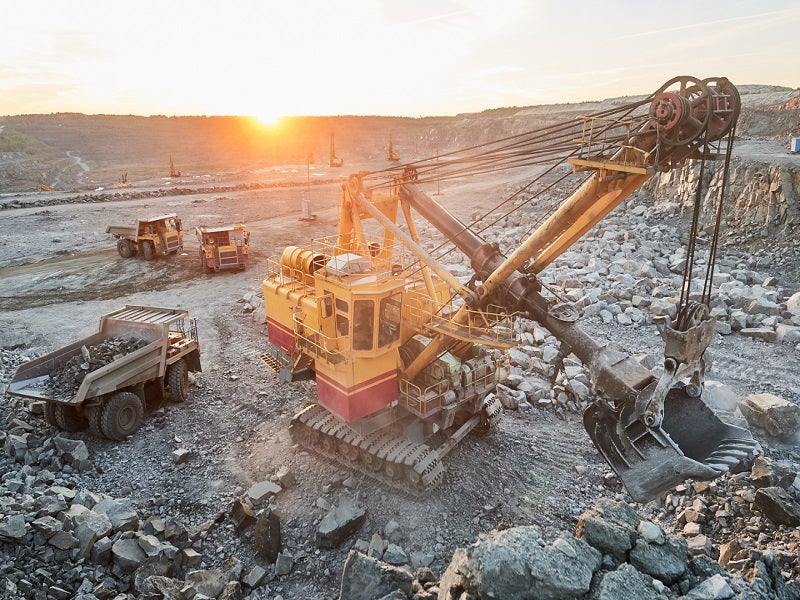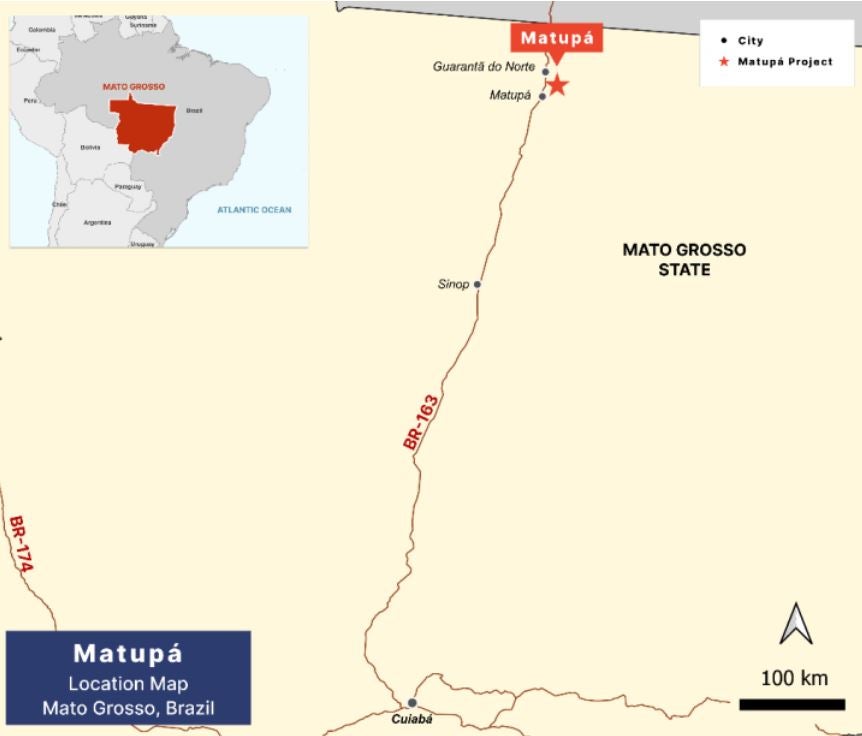The Matupa gold project is an open-pit mining development by Aura Minerals in the Mato Grosso state of Brazil.
A feasibility study for the project was completed in October 2022, which highlighted a life of mine (LOM) of seven years and an investment of $107.1m. The X1 deposit is planned to be developed initially while also continuing exploration and drilling activities.
The project is expected to commence commercial operation of the X1 deposit in September 2023, with a ramp-up until December 2023.
Project location
The Matupa gold project area is located in the Alta Floresta Gold Province (AFGP), in the north-central part of the Mato Grosso state in Brazil. It encompasses the towns of Matupa and Guaranta do Norte.
Aura Minerals holds the mineral rights for nine properties totalling an area of 62,506.46ha. Three properties cover an area of 15,333.81ha within an existing mining concession containing the X1 deposit. The other six properties fall under an exploration permit, covering an area of 47,172.65ha.
Geology and mineralisation
The AFGP lies within the south-central part of the Amazon Craton, a crustal segment of South America. It mainly constitutes plutono-volcanic sequences generated in Paleo and Mesoproterozoic continental arcs. The project area is part of the granitic bodies of the Matupa intrusive suite intruded by quartz-feldspar porphyries and fine-grained mafic to intermediate dykes.
Mineralisation at Matupa occurs as disseminated gold hosted in the Matupa Granite, with porphyritic granodiorites and other acidic intrusive rocks dominating the area.
The X1 deposit extends 400m east-west and 250m north-south.
Reserves
The proven and probable mineral reserves at Matupa are estimated at 8.48Mt grading 1.13g/t gold for a total gold content of 309,150oz as of December 2022.
Mining methods
Matupa gold project will be operated as a conventional open-pit mine with drill and blast, haul and load operation. The mine development plan enables grade-level ore access to maximise gold production while providing the flexibility of mining multiple benches simultaneously. The production schedule involves an initial 0.4Mt stock of ore equivalent to three months of production.
Mining operations will be conducted with a minimum mining width of 30m on 10m-high benches. A final bench access will be developed for the X1 pit with a mining width of 15m to maximise access to the mineralised zone. The upper bench face slope will be developed with a slight decline from the crest to the toe to drain rainfall and maintain slope angles.
The mining operations will be contractual with a mining fleet consisting of 70t hydraulic excavators in backhoe configuration, supported by front-end loaders and 8×4 trucks with a 22m3 dump box size.
Processing details
The Matupa processing facility will have a rated capacity of 1.3Mtpa. The average annual gold production is estimated at 54,779oz.
The run-of-mine (ROM) ore will be crushed in a primary jaw crusher to a nominal size of 90mm.
The crushed ore will be fed to a single-stage grinding circuit comprising a high-aspect semi-autogenous (SAG) mill in a closed configuration with hydrocyclones. The hydrocyclones undersize will flow to a thickener prior to processing in a leaching-carbon-in-leach (L-CIL) circuit. The cyclone underflow will be directed to the gravity concentrate recovery circuit comprising a scalp screen, a centrifugal concentrator, and an intensive leaching reactor (ILR) prior to leaching.
Concentrate from the gravity circuit will be fed to the ILR to extract gold via intensive cyanidation. The leach-adsorption circuit will consist of two leach tanks and six carbon-in-leach (CIL) tanks. The gold metal particles will be adsorbed onto loaded carbon.
The loaded carbon from the CIL circuit will be acid-washed to remove calcium adsorbed by the carbon and transferred to the elution column that uses the Zarda method. The elution solution will feed the electrowinning circuit in the gold room.
The gold-rich cathode sludge will be washed, filtered and mixed with smelting fluxes prior to smelting in a liquefied petroleum gas (LPG) furnace at 1,100°C to produce gold dore.
Infrastructure details
All target areas of the project are readily accessible by a network of paved secondary roads off the Cuiaba-Santarem highway (BR 163).
Power will be supplied from an existing 138kV transmission line from Matupa to Guaranta to a new substation to the east of the process plant. The project’s main substation will be positioned adjacent to the sectioning substation to step-down the voltage from 138kV to 13.8kV. Three diesel generators will provide backup power.
The project is estimated to require 25m3/h of raw water, which will be sourced from the Porcao River. Raw water will be processed through the potable water treatment skid and stored in the potable water tank.
Contractors involved
The feasibility study was prepared by engineering services company Promon Engenharia, with inputs from Aura Minerals and independent consultant Homero Delboni. Consulting companies HDA Servicos, GE21 Consultoria Minera, and EDEM Consultants were also involved in preparing the same.
Electric utility company ENERGISA will be responsible for building the sectioning substation and the headers of the transmission line. The company will be responsible for the package’s engineering, environmental licensing, construction, and commissioning.






